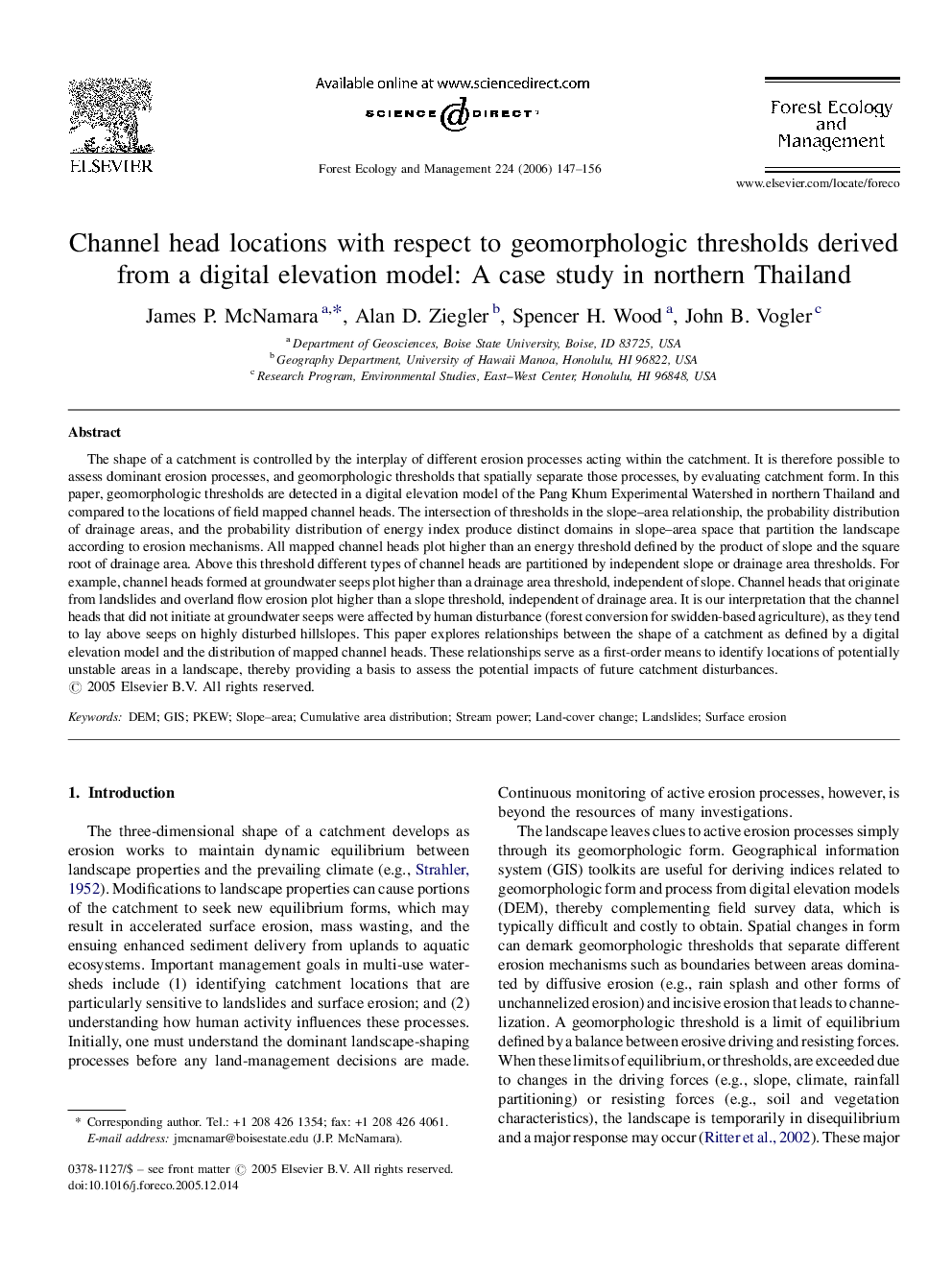| Article ID | Journal | Published Year | Pages | File Type |
|---|---|---|---|---|
| 91056 | Forest Ecology and Management | 2006 | 10 Pages |
The shape of a catchment is controlled by the interplay of different erosion processes acting within the catchment. It is therefore possible to assess dominant erosion processes, and geomorphologic thresholds that spatially separate those processes, by evaluating catchment form. In this paper, geomorphologic thresholds are detected in a digital elevation model of the Pang Khum Experimental Watershed in northern Thailand and compared to the locations of field mapped channel heads. The intersection of thresholds in the slope–area relationship, the probability distribution of drainage areas, and the probability distribution of energy index produce distinct domains in slope–area space that partition the landscape according to erosion mechanisms. All mapped channel heads plot higher than an energy threshold defined by the product of slope and the square root of drainage area. Above this threshold different types of channel heads are partitioned by independent slope or drainage area thresholds. For example, channel heads formed at groundwater seeps plot higher than a drainage area threshold, independent of slope. Channel heads that originate from landslides and overland flow erosion plot higher than a slope threshold, independent of drainage area. It is our interpretation that the channel heads that did not initiate at groundwater seeps were affected by human disturbance (forest conversion for swidden-based agriculture), as they tend to lay above seeps on highly disturbed hillslopes. This paper explores relationships between the shape of a catchment as defined by a digital elevation model and the distribution of mapped channel heads. These relationships serve as a first-order means to identify locations of potentially unstable areas in a landscape, thereby providing a basis to assess the potential impacts of future catchment disturbances.
